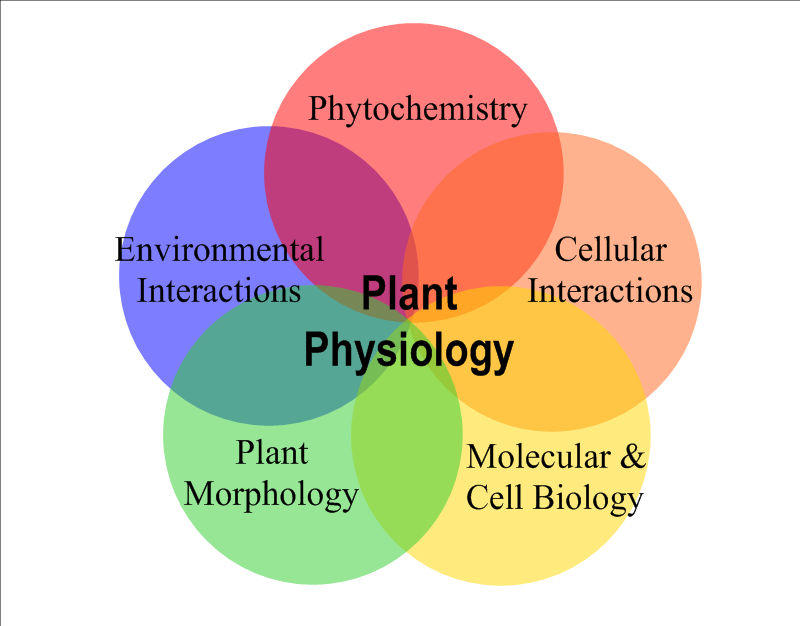Physiology
|
Plant physiology encompasses all the internal chemical and physical activities of plants associated with life. Chemicals obtained from the air, soil and water form the basis of all plant metabolism. The energy of sunlight, captured by oxygenic photosynthesis and released by cellular respiration, is the basis of almost all life. Photoautotrophs, including all green plants, algae and cyanobacteria gather energy directly from sunlight by photosynthesis. Heterotrophs including all animals, all fungi, all completely parasitic plants, and non-photosynthetic bacteria take in organic molecules produced by photoautotrophs and respire them or use them in the construction of cells and tissues. Respiration is the oxidation of carbon compounds by breaking them down into simpler structures to release the energy they contain, essentially the opposite of photosynthesis.
The algae are a polyphyletic group and are placed in various divisions, some more closely related to plants than others. There are many differences between them in features such as cell wall composition, biochemistry, pigmentation, chloroplast structure and nutrient reserves. The algal division Charophyta, sister to the green algal division Chlorophyta, is considered to contain the ancestor of true plants.[142] The Charophyte class Charophyceae and the land plant sub-kingdom Embryophyta together form the monophyletic group or clade Streptophytina. |

|